Playlist: Climate One's Portfolio

In 2007, Greg Dalton and a group of Commonwealth Club members visited the Arctic Circle aboard a Russian icebreaker to witness the effects of climate change firsthand. After being informed, alarmed, and compelled to do something, Greg founded Climate One, a branch of the Commonwealth Club dedicated to promoting dialogue on clean energy, economy, and the environment between business leaders and community activists. In 2011, Climate One will examine strategic climate change issues with a specific focus on food and agriculture, transportation, and building and land use. Building & Land Use: According to the famous McKinsey carbon abatement curves, transportation and commercial and... Show full description
Featured
2017-02-12 Doubt, Deny or Defend: Republicans on Climate Change
From Climate One | 59:00
Much has been made of the partisan divide when it comes to climate change. But are there Republicans out there who accept the science and believe in climate change? Believe it or not, there are. Bob Inglis, a former Republican representative and executive director of RepublicEn, says Republicans should not doubt or deny the science; rather, they should defend it, because their party has the best solutions, based on markets and not mandates. Inglis is joined by John Hofmeister, former president of Shell Oil Company, and Jeremy Carl, a research fellow from the Hoover Institute at Stanford for a vibrant discussion about the tension between climate science, America's energy needs and the Republican party in the coming years.

Host: Greg Dalton
Guests:
Jeremy Carl, Research Fellow, Hoover Institution, Stanford University
John Hofmeister, Former President, Shell Oil Company
Bob Inglis, Former Republican U.S. Representative, South Carolina
This program was recorded live at The Commonwealth Club in San Francisco on January 24, 2017.
Much has been made of the partisan divide when it comes to climate change. But are there Republicans out there who accept and believe in climate change? Believe it or not, there are -- Bob Inglis, former South Carolina representative, is one of them.
During his six years in Congress, Inglis says, he thought climate change was “hooey.” It was the conviction of his 18-year-old son, followed by trips to the Arctic and Australia to see the effects of global warming for himself that convinced him of the urgency.
“[I] came home and introduced Raise Wages, Cut Carbon Act of 2009,” Inglis remembers, adding that it was “probably not a good idea to introduce a carbon tax in the midst of the great recession in the reddest district in the reddest state in the nation!” The bill died, and Inglis lost his next bid for congress to a tea party candidate.
But the seed was planted. Inglis went on to start RepublicEn.org, a non-profit coalition of conservative “energy optimists and climate realists.” The solutions, he believes, are based not in government subsidies and regulations, but in free enterprise, corporate accountability and stewardship.
John Hofmeister, a former Shell Oil executive, is another unlikely supporter of the climate change movement. During his tenure at the company he was instrumental in convincing the president of Shell to get out of the Global Climate Coalition, a big-oil conglomerate which Hofmeister calls “a fishy organization that seemed to promote one thing, but actually did another.”
“They seemed to be interested superficially in effects on climate,” says Hofmeister. “But in fact they were working to defeat any legislative effort to do anything that might amend how businesses practiced and how industry operates.”
Inglis, who admits that he is now more “Republican in name only,” believes that conservatism and populism are on a collision course – which will make it difficult to make progress. He describes the populist movement as a fire. “And if you think you can direct fire, you're wrong…it’s pitchforks and torches. You can burn down some houses. But you can't build anything because there's nothing to build with. All you’ve got is anger and pitchforks and torches. And those aren’t good tools for building.”
The new administration has, to no one’s surprise, not been kind to the climate change movement so far. With a president focused more on the art of the deal than the state of the planet, can both sides of the aisle come together on a solution? Conservative economists have argued for a carbon tax, even evoking free-market icon Milton Friedman in support of their cause.
“I think one has to distinguish the theory from the practice,” warns Jeremy Carl of the Hoover Institute. “And in theory, there could be a lot to be said for it, particularly if you're cutting it with offsetting taxes elsewhere. So it's not about growing government or creating a physical drag, having carbon tax. But the practical details I think frankly are still a huge hold up.”
Conservatives, he says, are skeptical of “where this would go, why it might get hijacked, what other things would go along with it. If we’re doing this, is it on top of a bunch of other rules and regulations that we've already got or are we getting rid of a bunch of subsidies?”
That view, Inglis says, is more cynical than skeptical. “The reality is, America is waiting for somebody to bring us together. Somebody to lead and say, you know what, conservatives, do you have anything to offer?”
Both sides need to admit there’s a problem, and to reach a compromise, continues Inglis. “The left has to say ‘listen, environmental justice later.’ The right has to say, ‘really, we can trust our fellow citizens to come up with a solution that works.’
“If we can't, the experiment in self-government has failed, and we need to call up the Queen and ask her back.”
Related Links:
The Conservative Case for a Carbon Tax (Huffington Post)
What would Milton Friedman do about climate change? (Forbes)
Donald Trump and the triumph of climate change denial (Atlantic)2017-05-28 Texas Surprise
From Climate One | 58:56
When Californians think of Texas, images of JR Ewing and pump jacks quickly come to mind. But the Lone Star State is greener than you think – it leads the country in wind power, thanks to a law signed by Governor George W. Bush in 1999. Texans also claim the state can comply with President Obama’s Clean Power Plan with technologies and policies already on hand. Ranchers and former oil men are dipping their toes into renewable energy. What else is in the clean energy pipeline? A conversation with Texas energy leaders about fossil fuels and renewables in America’s most prominent energy-exporting state.
- Playing
- 2017-05-28 Texas Surprise
- From
- Climate One

Host: Greg Dalton
Guests:
Kip Averitt, Former Chair, Texas Clean Energy Coalition
Stephanie Smith. COO, Greencastle LLC
Pat Wood III, Principal, Wood3 Resources
This program was recorded live at The Commonwealth Club in San Francisco on April 25, 2017.
When Californians think of Texas, images of JR Ewing and pump jacks quickly come to mind. But the Lone Star State is greener than you think – it leads the country in wind power, thanks to a law signed by Governor George W. Bush in 1999. Texans also claim the state can comply with President Obama’s Clean Power Plan with technologies and policies already on hand. Ranchers and former oil men are dipping their toes into renewable energy. What else is in the clean energy pipeline?
Stephanie Smith, CEO of Greencastle, is a native Texan whose early law career focused on clean energy deals. “It did not go over well,” at first with her parents’ friends, she laughs. “I believe ‘hippie tree hugger’ was used fairly frequently. But, it was pretty amazing how, I’d say within about a year, the conversation was changing.”
Convincing her family that renewables made sense was, as with many fossil fuel holdouts, a matter of economics. Once their west Texas friends started installing wind turbines on their land, she says, “It evolved really quickly. Because the economics were great for those farmers.”
For Pat Wood, former Chair of Texas’ Public Utility Commission, the impetus came directly from his boss. “We like wind,” then-Governor George Bush told him in 1996. Wood’s first response was, “You’ve got to be kidding!” But after a series of hearings and public policy educating sessions, he came around. “The surprise out of that whole process was how much broad public support, after learning the pros and cons of everything, people really like this.”
“We got a bill that opened up the power industry, and the rest is history,” Wood continues. “And part of that was a renewable goal mandate for the state that we’re going to hit 2,000 megawatts of wind by 2009; well, now we’re at 18,000. So it's been a big success.”
Kip Averitt, who ran the Texas Clean Energy Coalition, admits to being “a bit of a nerd – I like to see results.” Much of what happens in the public policy arena is vague and difficult to track, Averitt says. “But when it comes to clean air, there's a scientific way to measure your results. And so when we enacted policies we could actually track over time, whether or not they were working …our clean-air programs happened to be very successful.”
Averitt agrees that economic issues have helped drive the state’s attitude shift, especially in impoverished rural areas. “This renewable energy search is bringing it back to life…the new schools and the property taxes and stuff like that. That is a real-time, tangible result that people can feel and see.
“When I was in office, I would tell folks 30 and 40 years ago in Texas, if you were concerned about the environment you were a communist and you could not get elected to public office,” Averitt continues. “Today in Texas if you're not concerned about the environment, you’re a goober and you’ll have a very hard time getting elected to public office.”
Wood believes that much of the Republican opposition to the clean air agenda has been the result of backlash against the Obama administration and its support of renewables. “It was a pretty lonely place to be, a clean energy supporting Republican, for the last eight years,” he admits.
Texas may still be one of the reddest states in the union. But could its commitment to renewable energy be altering the color chart? Not exactly, says Wood.
“It’s red, white and blue -- I like that answer,” he states. “Everybody says it was red, it was blue, it was purple -- but I like red, white and blue. I think that works even better.”
Related Links:
Competitive Renewable Energy Zones (CREZ) (Texas Tribune)
Electric Reliability Council of Texas (ERCOT)
Which state is a big renewable energy pioneer? Texas (Wall Street Journal)
2017-08-06 Al Gore and An Inconvenient Sequel: Truth to Power
From Climate One | Part of the Climate One series | 58:58
Former Vice President Al Gore joins Climate One to talk about his tireless fight, training an army of climate champions and influencing international climate policy. Joined by co-directors Bonni Cohen and Jon Shenk, this conversation covers the making of their new movie AN INCONVENIENT SEQUEL: TRUTH TO POWER and the solutions that it offers.
More than just doom and gloom, this is rare conversation focusing on how to solve the climate challenge.
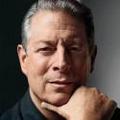
Host: Greg Dalton
Guests:
Al Gore, Former Vice President
Bonni Cohen, Filmmaker
Jon Shenk, Filmmaker
This program was recorded live at Marines Memorial Theater in San Francisco on July 24, 2017.
In 2006, Al Gore brought his climate change slide show to the American public in the Academy Award winning documentary “An Inconvenient Truth.” Back then, Gore warned of an increasing “planetary emergency” if global warming continued unchecked, including rising sea levels, coastal flooding, and nations of climate refugees.
While some of those predictions have, regrettably, come true – such as Hurricane Sandy flooding the World Trade Center site in 2012 – this year’s follow-up to the film offers less doom and gloom, more concrete solutions -- and a glimmer of hope.
“An Inconvenient Sequel: Truth to Power,” documents the former vice president as he continues his tireless fight to spread global awareness of the problem. The film’s directors, Bonni Cohen and Jon Shenk, went behind the scenes with Gore, adopting a “fly on the wall” approach. They shadowed him from his Nashville home, a working farm, to visits with refugees from the typhoon-devastated island of Tacloban in the Philippines, to the 2015 Paris climate summit.
Gore and the filmmakers joined Greg Dalton and a rapt Climate One audience to discuss the making of the film and the path forward that it offers for the climate movement.
While Gore was heartened by the Paris outcome, he warns that “even if all of its commitments by all 194 nations are kept, is still not enough; we need to do more.”
But the technology is there, he continues, and becoming increasingly more accessible. Costs of renewable energy, electric cars and other sustainable options are coming down “so dramatically that the world has the solutions now.”
Even the Trump administration’s whole-hearted rejection of the Paris accord hasn’t deterred the rest of the world, says Gore.
“I was deeply concerned that other countries might have used it as an excuse to pull out of the Paris agreement themselves,” admits Gore. “But I was immensely gratified when almost immediately afterward the entire rest of the world redoubled their commitment.”
Gore got applause from the audience when he cited California governor Jerry Brown for leading the way. “Quite a number of states are moving in that direction…including a lot of California companies. Apple and Google and others come to mind who are already hundred percent renewable here.”
And, he adds, many Republican lawmakers have come out of the “climate closet” and joined the bipartisan Climate Solutions Caucus.
As with other social movements of the past, Gore notes, the tide of public opinion is turning. He compares the shift in attitude to that which fueled other social changes, such as abolition, women’s’ suffrage and LGBTQ rights. A Tennessee native, Gore saw first-hand the changes brought about by the civil rights movement of the 1960s.
“You want to see ferocious resistance to social and moral change?” asks Gore. “The climate denial is no more ferocious than the resistance to civil rights in the South. “And yet, it gave way.”
With the Paris agreement, advances in technology and increased public pressure on corporations and lawmakers, there are many reasons for hope, says Gore – as long as we remain vigilant.
“This challenge is unprecedented,” Gore tells the audience. “We quadrupled population in the last hundred years…the short-term thinking with which we view the future consequences of present actions really blinds us to the full range of what we’re doing and what it causes.
“So we do have to fall back on what's most important to us and shake off the distraction of modern culture, connect with one another on a human level.”
Related Links:
“An Inconvenient Sequel” - Trailer
2017-09-17 Harvey and Irma: A Hurricane’s Human Fingerprints
From Climate One | Part of the Climate One series | 58:59
From Katrina and Sandy to Harvey, Irma and José - how is climate change fueling these increasingly destructive hurricanes? Greg Dalton and his guests delve into the politics, costs and human causes of the megastorms pummeling our planet.

Host: Greg Dalton
Guests:
Brian Schatz, US Senator, (D-HI)
Ben Santer, Climate Researcher, Lawrence Livermore National Laboratory
John Englander, Author, High Tide on Main Street: Rising Sea Level and the Coming Coastal Crisis (Science Bookshelf, 2012)
Angela Fritz, Manager, Weather Underground
Kathryn Sullivan, former NOAA Administrator
Hunter Cutting, Director of Strategic Communications, Climate Nexus
Don Cameron, Manager, Terranova Ranch
Barton Thompson, Professor of Natural Resources, Stanford Law School
In this special program, Climate One takes a microscope to the human fingerprints left by Katrina, Sandy, Harvey and Irma, reaching into our archive of experts to examine the causes of our ever-wilder weather patterns.
With all the media coverage surrounding Hurricanes Harvey and Irma, there’s been very little discussion about how our species has contributed to this recipe for destruction. But the evidence is overwhelming that human activity has turned up the heat on the planet, whipping the ingredients for a hurricane into overdrive. Kathryn Sullivan, former head of NOAA under President Obama, described it as “stovetop science” when she visited Climate One in early 2017.
“So, the energy that drives weather in our planet is the heat coming in from the sun,” Sullivan explains, “the moisture content of the atmosphere…rotation of the earth, all of the swirling that that introduces.
“So we’re dialing up the extra heat in the atmosphere…it's really stovetop science working on the planetary scale.”
Recently, as Hurricane Irma was barreling down on Florida, Greg Dalton spoke with U.S. Senator Brian Schatz of Hawaii. He asked Schatz, a Democrat, if the force of two megastorms pummeling our country is enough to change hearts and minds in Washington about the causes of climate change.
Schatz thinks that there are “probably a dozen Republicans who would like to do the right thing on climate.
“They understand that this is an urgent matter,” he continues. “Whether you want to call it climate change or increasing frequency of severe weather, there's a recognition that the weather is getting worse, and it's because of what we’re doing to the atmosphere.”
And, he adds, Americans no longer have the luxury of dismissing its effects.
“There is a deep immorality in ignoring what is real and what is happening. And the fact that it’s getting worse and causing real human suffering and also having a terrible impact fiscally on the federal treasury, you know, is gonna require us to act.”
2017-11-05 A Conversation with Amy Goodman and Kenneth Kimmell
From Climate One | Part of the Climate One series | 58:59
As the host and Executive Producer of Democracy Now! Amy Goodman has built a career on covering the grassroots activism and general muckraking that can catalyze change. Under its president Kenneth Kimmel, the Union of Concerned Scientists has led the charge in exposing the relationship between oil companies, climate change and climate denial, and is working to make those issues a priority in congress.
In this program, Goodman and Kimmell discuss the intersection between science and the media, and the ways that activist journalism can push mainstream news outlets into broadening their coverage of climate change.
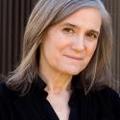
Host: Greg Dalton
Guests:
Amy Goodman, Host, Executive Producer, Democracy Now!
Kenneth Kimmell, President, Union of Concerned Scientists
This program was recorded live at The Commonwealth Club in San Francisco on October 20, 2017.
In 2016, while Amy Goodman was covering the Dakota Access Pipeline protests at Standing Rock for Democracy Now!, a warrant was issued for her arrest. Most people might have been deterred by that threat. Not Goodman.
“I didn't take this arrest warrant personally,” she tells the Climate One audience. “It was a message sent to all journalists: do not come to North Dakota. Which is exactly why we had to be there.”
In the twenty-plus years that she has been producing the independent news program Democracy Now!, Goodman has never shied away from taking on powerful industries when bringing a story to the public. Rather, she has built her career on covering the grassroots activism and general muckraking that can catalyze change – as they did at Standing Rock.
About the DAP arrest, she says, she saw it as a call to arms. “I wanted to ensure that young journalists would not be afraid to go to cover this historic gathering around the fate of the planet, around sustaining our planet …to fear that they would be arrested if they went to cover this.”
Ken Kimmell brings the same tirelessness and tenacity to his work. Under his watch, UCS has led the charge in exposing the relationship between oil companies, climate change and climate denial, and is working to make those issues a priority in congress.
Goodman and Kimmell came to Climate One to discuss the intersection between science and the media, and the ways that activist journalism can push mainstream news outlets into broadening their coverage of climate change – coverage that is sorely lacking, both maintain.
Kimmell expressed frustration that the media still isn’t doing enough in this area, despite established consensus among the scientific community that storms like Harvey and Irma are being exacerbated by climate change.
“We see all these stories…about these severe weather events and the words climate change are hardly mentioned,” says Kimmell.
“I think [the media] really have an obligation to tell people two things,” he continues. “One, climate change has fingerprints on these events, and two, we are all paying for this right now in the billions and billions of dollars that it's going to cost to deal with all these disasters.
“People are still not really getting that it's affecting them right now. Not 20 years, not 50 years, right now. And it's affecting them if they’re victims of these events, but even if they're not.
“They’re gonna pay for all of this. We’re all gonna pay for all of this. And the media really needs to do a much better job of explaining that.”
Related Links:
The National Academy of Sciences: Climate Change
Drilling and Killing: Chevron and Nigeria's Oil Dictatorship - Democracy Now!
2017-11-26 Bill Nye: Science Guy
From Climate One | Part of the Climate One series | 58:58
As the Science Guy, television’s Bill Nye inspired a generation of children to love science as much as he does. But these days, he’s speaking to a new audience. "Nowadays I’m talking to adults," says Nye, "and I’m not mincing words. The climate is changing, it’s our fault, and we’ve gotta get to work on this!"
Since ending his program in 1999, Nye and his famous bow tie have taken on a new challenge: stopping the spread of anti-scientific thinking across the world. In a new documentary, director Jason Sussberg shadows Nye as he goes toe-to-toe with outspoken climate deniers and travels the world to show the causes and effects of climate change. Nye and Sussberg discuss filming the documentary Bill Nye: Science Guy, the state of climate science and how to save the planet.
- Playing
- 2017-11-26 Bill Nye: Science Guy
- From
- Climate One
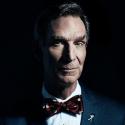
Host: Greg Dalton
Guests:
Bill Nye, Television Host, Science Educator
Jason Sussberg, Filmmaker, Bill Nye: Science Guy
This program was recorded live at Marines' Memorial Theater in San Francisco on November 6, 2017.
As the Science Guy, television’s Bill Nye inspired a generation of children to love science as much as he does. But these days, he’s speaking to a new audience. "Nowadays I’m talking to adults," says Nye, "and I’m not mincing words. The climate is changing, it’s our fault, and we’ve gotta get to work on this!"
Since ending his program in 1999, Nye and his famous bow tie have taken on a new challenge: stopping the spread of anti-scientific thinking across the world. In a new documentary, director Jason Sussberg shadows Nye as he goes toe-to-toe with outspoken climate deniers and travels the world to show the causes and effects of climate change.
A recent Climate One audience, largely made up of young admirers, was entertained by Nye as he related stories from his travels and explorations, and offered advice for aspiring young scientists.
“I became an engineer because I like bicycles and airplanes,” Nye told them. “They’re fun.”
He went on to challenge them to use their ideas to make the world a better place.
“There’s three things we want for everybody in the world,” Nye said. “We want clean water, renewably produced reliable electricity, and access to the …with those three things we could, I believe provide a high-quality life for everyone on earth. [And] for that…we’re gonna need everybody working together.”
Nye’s enthusiasm was contagious as he exhorted the rapt audience to “get ‘er done!”
“So we are in charge here,” he reminded them. “We are running the planet, and we have to take responsibility for it.
“And so it is terrifying and cool. It is sobering and empowering and you are gonna be a big part of that. Go get ‘em. Save the world!”
– Anny Celsi
Related Links:
2017-11-26 Bill Nye: Science Guy
From Climate One | Part of the Climate One series | 58:58
As the Science Guy, television’s Bill Nye inspired a generation of children to love science as much as he does. But these days, he’s speaking to a new audience. "Nowadays I’m talking to adults," says Nye, "and I’m not mincing words. The climate is changing, it’s our fault, and we’ve gotta get to work on this!"
Since ending his program in 1999, Nye and his famous bow tie have taken on a new challenge: stopping the spread of anti-scientific thinking across the world. In a new documentary, director Jason Sussberg shadows Nye as he goes toe-to-toe with outspoken climate deniers and travels the world to show the causes and effects of climate change. Nye and Sussberg discuss filming the documentary Bill Nye: Science Guy, the state of climate science and how to save the planet.
- Playing
- 2017-11-26 Bill Nye: Science Guy
- From
- Climate One

Host: Greg Dalton
Guests:
Bill Nye, Television Host, Science Educator
Jason Sussberg, Filmmaker, Bill Nye: Science Guy
This program was recorded live at Marines' Memorial Theater in San Francisco on November 6, 2017.
As the Science Guy, television’s Bill Nye inspired a generation of children to love science as much as he does. But these days, he’s speaking to a new audience. "Nowadays I’m talking to adults," says Nye, "and I’m not mincing words. The climate is changing, it’s our fault, and we’ve gotta get to work on this!"
Since ending his program in 1999, Nye and his famous bow tie have taken on a new challenge: stopping the spread of anti-scientific thinking across the world. In a new documentary, director Jason Sussberg shadows Nye as he goes toe-to-toe with outspoken climate deniers and travels the world to show the causes and effects of climate change.
A recent Climate One audience, largely made up of young admirers, was entertained by Nye as he related stories from his travels and explorations, and offered advice for aspiring young scientists.
“I became an engineer because I like bicycles and airplanes,” Nye told them. “They’re fun.”
He went on to challenge them to use their ideas to make the world a better place.
“There’s three things we want for everybody in the world,” Nye said. “We want clean water, renewably produced reliable electricity, and access to the …with those three things we could, I believe provide a high-quality life for everyone on earth. [And] for that…we’re gonna need everybody working together.”
Nye’s enthusiasm was contagious as he exhorted the rapt audience to “get ‘er done!”
“So we are in charge here,” he reminded them. “We are running the planet, and we have to take responsibility for it.
“And so it is terrifying and cool. It is sobering and empowering and you are gonna be a big part of that. Go get ‘em. Save the world!”
– Anny Celsi
Related Links:
2017-12-31 Ai Weiwei: Human Flow
From Climate One | Part of the Climate One series | 58:57
Ai Weiwei is an artist who uses many canvases to express himself. From art installations to architecture, social media to the big screen, Ai is one of the most transcendent figures in the world. His latest project, Human Flow, details human migration and the refugee crisis. Whether they’re fleeing from war, politics or climate disruption, Human Flow is a thought-provoking, poignant journey through a harsh reality that large parts of the global population are not yet free.
The Climate Music Project uses historical climate data to create musical works that allow audiences to viscerally experience the effects of climate change from the earliest days of the industrial revolution to the present, and to visualize the future scenario that awaits us if we fail to act. Greg Dalton discusses the project with its founder, Stephan Crawford, and its scientific advisor, Bill Collins.
- Playing
- 2017-12-31 Ai Weiwei: Human Flow
- From
- Climate One

Host: Greg Dalton
Guests:
Ai Weiwei, Artist, Filmmaker
Stephan Crawford, founder and executive producer, Climate Music Project
Bill Collins, director, Climate and Ecological Sciences Division, Lawrence Berkeley National Laboratory
Interview with Ai Weiwei was recorded live at The Commonwealth Club in San Francisco on October 3rd, 2017.
Ai Weiwei is an artist who uses many canvases to express himself. From art installations to architecture, social media to the big screen, Ai is one of the most transcendent figures in the world. His latest project, Human Flow, details human migration and the refugee crisis.
The film was shot over the course of a year and covers human movement in 23 countries, people looking for safety and shelter. Whether they’re fleeing from war, politics or climate disruption, Human Flow is a thought-provoking, poignant journey through a harsh reality that large parts of the global population are not yet free.
Ai, whose father was the renowned poet Ai Qing, spent his early years living in political exile with his family in Xingjian, a remote area of China. That experience, he believes, helped him empathize with the hundreds of refugees he interviewed over the course of making the film.
“So since I was very young, I experienced all those very harsh political conditions like the discriminations, all those,” Ai remembers. “So that make me much easier to approach this film, Human Flow, and to see this human tragedy as part of my condition, you know. I feel there’s some connections in there.”
Climate change is one of the factors that has contributed to the global refugee crisis, Ai maintains. One example? Drought conditions in Syria. “I think before the Syrian war there’s seven years of drought,” says Ai. “Many people think that also contribute to the upheavals in the nation.”
Ai’s hope in making Human Flow is to shine a light on a worldwide crisis, “to see humanity as one, you know, human rights as one.
“If someone’s right is being violated, we all get hurt,” he continues. “If we don’t have this kind of understanding the problem, you know, someday we all can be get hurt. Because if we only have for this kind of visual condition to see us as one family…then we can have our empathies and we can come up some kind of solutions.”
Related Links:
2018-04-15 Climate One at Duke University: How Climate Change Will Change the Way We Eat
From Climate One | Part of the Climate One series | 58:58
As the planet heats up, it’s affecting many of the foods we love – when and where they’re grown, how they get to the grocery store and how much we pay for them. Join us for a conversation about migrating crops, shrinking grasslands, and how food producers and restaurants are using technology to better predict and adapt to the new food normal.
This Climate One program was recorded live at the Fuqua School of Business at Duke University on March 22, 2018.
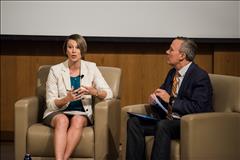
Host: Greg Dalton
Guests:
Ashley Allen, Senior Manager, Climate and Land, Mars Corporation
Jason Clay, Senior Vice President, Food & Markets; Executive Director, Markets Institute, World Wildlife Fund
Annie Cull, Director of Communications, The Good Food Institute
Karen Leibowitz, co-founder, The Perennial; Executive Director, The Perennial Farming Initiative
This Climate One program was recorded live at the Fuqua School of Business at Duke University on March 22, 2018.
From oatmeal to oysters, the world’s food supply is being drastically altered by rising temperatures and extreme weather. As the planet heats up, it’s affecting many of the foods we love – when and where they’re grown, how they get to the grocery store and how much we pay for them.
This changing agricultural landscape calls for adaptive measures from large food producers like Mars. The family-owned company makes not just the M&Ms, Twix and Snickers bars we love, but also pet foods like Pedigree and Iams and people foods such as Uncle Ben’s Rice.
“We source thousands of ingredients from over eighty countries around the world,” says Ashley Allen, Senior Manager of Climate and Land for Mars. “And that really is a large value chain that’s exposed to climate change in a lot of different contacts, in a lot of different countries.
“So thinking about sustainability and issues like climate change is really in our DNA,” she continues. “Everything we do now is going to be really focused on helping farmers increase their productivity, looking at places where things are grown most efficiently and effectively and focusing there.”
Jason Clay, who monitors global food markets for the World Wildlife Fund, paints a picture of climate impact on the world’s food supply.
“The impact of climate change on disease in West Africa has caused about a third of production to go down by ninety percent,” he reports.
Changes are being seen in the Midwestern U.S. as well, with many of the crops moving north towards Canada.
“We won't be producing spring wheat in the U.S. within thirty years,” Clay continues. “The Corn Belt will be in Canada within eighty years.”
The World Wildlife Fund is concerned with ways to produce more food with less environmental impact. But, Clay adds, there’s another piece to the puzzle: eliminating food waste. In the U.S., he says, most of the waste generated is on the consumer side.
“It’s portion size, it’s what you throw out of your refrigerators, it’s what restaurants throw away, it’s what buffets throw away at the end of the day,” says Clay.
“So we’ve gotta figure out how to reduce waste of every different product all over the planet. Because that's probably the easiest strategy to get enough food that we need by 2050.”
Annie Cull is with the Good Food Institute, which advocates for plant-based alternatives to meat, for both health and environmental reasons.
“But at the end of the day, people want to make their food choices based on the same drivers that people have wanted for generations,” she says. “What tastes good, what’s affordable, what’s convenient, how much time do I have to spend in the kitchen.”
Cull says that rethinking our diets can go a long way towards improving not only our own health, but the planet’s health as well. One place to start, she says, is with hamburgers – which Americans consume to the tune of 10 billion annually.
“If we could replace just thirty percent of a beef patty with mushrooms, it’s the equivalent of 2.3 million cars off the road,” she says, citing a report from the World Resources Institute. “It's the water usage of 2.6 million Americans, and it's bringing land back into new uses about the size of Maryland.”
In the second part of the program, Greg Dalton spoke with restaurateur Karen Liebowitz. She and her husband own Perennial, a sustainably run restaurant in San Francisco, and encourage other restaurants to adopt planet-friendly practices.
One method of reducing waste, says Liebowitz, is to practice “closed-loop” cooking – using every kitchen scrap possible, from potato skins to fish bones.
“We feed those to worms and larvae at our greenhouse and they take the energy in the food and become food for fish. And we feed the fish, and the fish fertilize the water,” she says. The water is then used to grow herbs and vegetables, bringing the process full circle.
“What we're really trying to do,” says Liebowitz, “is promote the idea that food can be part of the climate solution.”
Related Links:
The World Wildlife Fund: Food Waste
2018-04-29 The Population Bomb, 50 Years Later: A Conversation with Paul Ehrlich
From Climate One | Part of the Climate One series | 58:58
In 1968, the best-seller “The Population Bomb” (written by Paul and Anne Ehrlich, but credited solely to Paul) warned of the perils of overpopulation: mass starvation, societal upheaval, environmental deterioration. The book was criticized at the time for painting an overly dark picture of the future. But while not all of the Ehrlich’s dire predictions have come to pass, the world’s population has doubled since then, to over seven billion, straining the planet’s resources and heating up our climate. Can the earth continue to support an ever-increasing number of humans? On its 50th anniversary, we revisit “The Population Bomb” with its author, Paul Ehrlich.
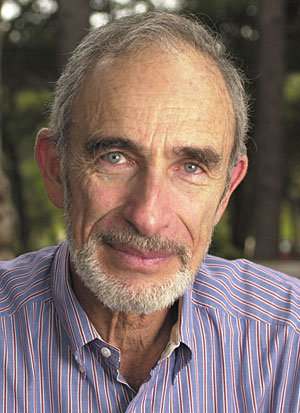
Host: Greg Dalton
Guests:
Paul R. Ehrlich, President, Center for Conservation Biology, Bing Professor of Population Studies, Stanford University; co-author, “The Population Bomb” (Ballantine, 1968)
In 1968, the best-seller “The Population Bomb,” written by Paul and Anne Ehrlich (but credited solely to Paul) warned of the perils of overpopulation: mass starvation, societal upheaval, environmental deterioration. The book was criticized at the time for being overly dark – how have the Ehrlich’s predictions held up?
“It’s much darker today,” says Paul Ehrlich. He’s speaking with Greg Dalton on the campus of Stanford University, where he is a Professor of Population Studies.
“After all, we were worried then about the problems of feeding human society when there was three and half billion people on the planet…now we've got way over 7 billion people.
“We have something on the order of 800 million -- that's more than double the population of United States -- hungry and starving,” Ehrlich continues. “And another billion or two who are micronutrient malnourished.”
The problem isn’t that there’s not enough to go around, says Ehrlich – the problem is that it’s not going around on an equal basis.
“Population and per capita consumption are what really important,” he tells Dalton. “Many people like us consume too much. And then there is several billion who don't get to consume enough. And that's one of the huge problems that’s not normally discussed in those terms.”
In the book, the Ehrlich’s advocated for a “green revolution” as a way to alleviate the impending world food shortage. But the mass scaling up of organic farming proved to be impractical.
“Certainly there are a bunch of mistakes in The Population Bomb,” Ehrlich admits, looking back on the book’s fiftieth anniversary.
“So yes, I think organic farming has huge potential, but there's also huge dangers there…in what we’re doing with our soils, which where is a resource we’re getting rid of at too rapid a rate.
“You don’t have to be a rocket scientist to realize that when you have a finite planet, you can’t grow on it forever.”
Reducing, reusing and recycling our finite amount of resources among our growing population might help. Still, says Ehrlich, we shouldn’t be thinking in terms of perpetual sustainability.
“We should be thinking, among other things, of not stealing from our children and grandchildren; saving as much of the resources that are necessary for human life, including the living resources, and hoping that they will be able to find ways to continue. If not for a million years, may be for another thousand years.
“That would be sustainable enough for me, and let the Martians take over after that.”
Related Links:
2018-06-03 Mark Kurlansky and Anna Lappé: Plate to Planet
From Climate One | Part of the Climate One series | 58:56
Mark Kurlansky and Anna Lappé are two of the country’s most prolific and influential authors writing about feeding a crowded planet with a destabilized climate. The connection between global warming and the dinner table isn’t always obvious when we go to the grocery store. But our choices about how we put food on our plates, and what we do with the waste, contribute to as much as one third of total greenhouse-gas emissions. How can we continue to feed the planet without destroying it in the process? A conversation about the climate costs of global food production – and some possible solutions..
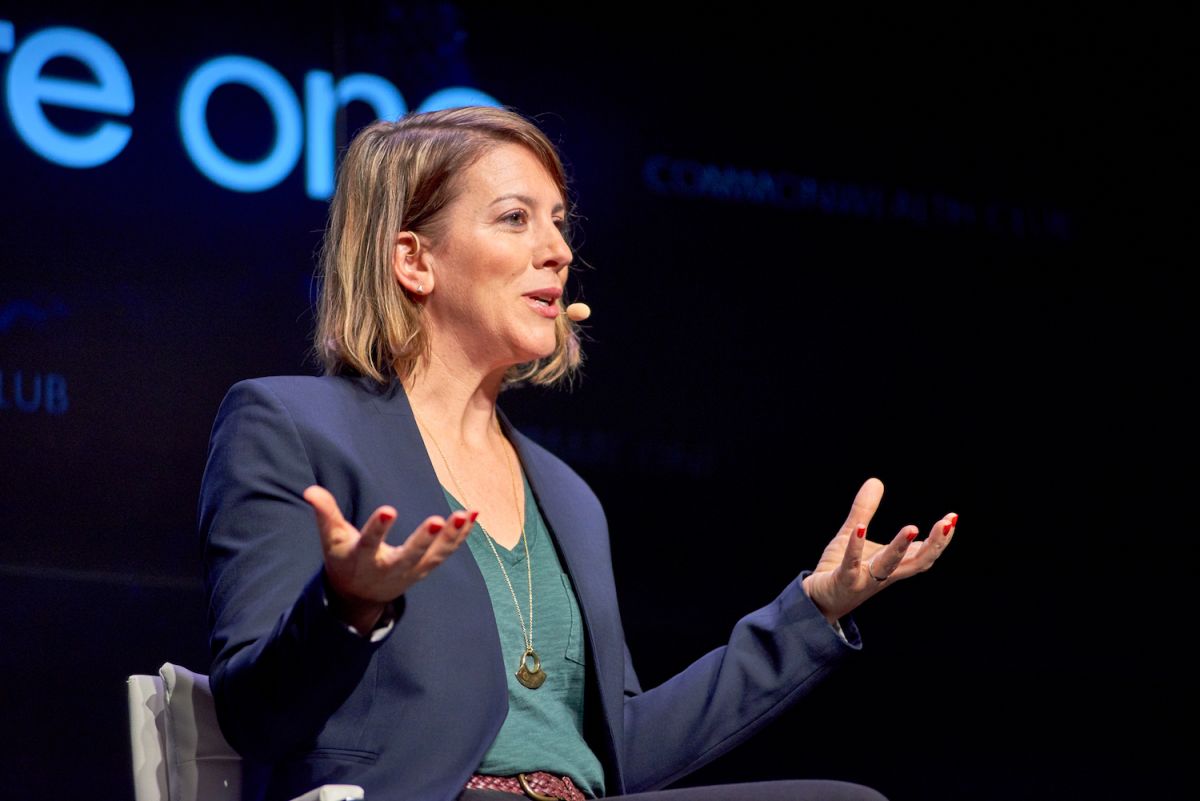
Host: Greg Dalton
Guests:
Mark Kurlansky, Author, MILK! A 10,000-Year Food Fracas (Bloomsbury, 2018)
Anna Lappé, Author, Diet for a Hot Planet: The Climate Crisis at the End of Your Fork (Bloomsbury, 2011)
This program was recorded live at The Commonwealth Club in San Francisco on May 16, 2018.
Anna Lappé remembers the moment she made the connection between climate change and livestock production.
“I was sitting in my Brooklyn brownstone apartment reading a study from the United Nations,” she recalls. The report was Livestock’s Long Shadow, published in 2006, which aimed to assess the environmental impact of the livestock sector.
“At the time it was about 18 percent of all global greenhouse gas emissions, which was more than every single train, plane and automobile,” says Lappé. “And I remember thinking, why isn’t everybody talking about this?
Lappé was spurred to explore the other ways that food production impacts our climate, “from seed to plate to landfill.” And that led her to write Diet for a Hot Planet (the title is a hat-tip to the seminal Diet for Small Planet, published by her mother, Francis Moore Lappé, in 1975).
The connection between global warming and the dinner table isn’t always obvious when we go to the grocery store. But our choices about how we put food on our plates, and what we do with the waste, contribute to as much as one third of total greenhouse-gas emissions. How can we continue to feed a crowded planet without destroying it in the process?
Food historian Mark Kurlansky has written best-selling books that explore the historical and cultural context of singular topics, including Cod and Salt. His most recent is MILK! A10,000 Year Food Fracas. Why a “fracas?”
“[Milk] has always been argued over, for like 10,000 years,” Kurlansky explains. “Whether you should use animals…which animals you should use, which hasn't been resolved. The arguments about raw milk versus pasteurization which came about in the 19th century…and we have newer ones about GMO crops for feed.”
Growing, packaging, producing and disposing of the food we eat makes up a big part of our climate footprint. And it’s easy to send blame down the supply chain. Can environmentalists, farmers and ranchers all get along?
Lappé’s research into global food production has convinced her that they can - if everyone works together toward the shared goal of fixing the climate.
“A lot of environmentalists are starting to realize that farmers really are both on the front lines of the climate impacts, but also they’re on the front lines of the climate solutions,” Lappé says.
“And when you bring these ecological practices to the farm, you're seeing a real power for biodiversity to go up, you’re seeing a huge push toward agroforestry…so to me I think there is more of an understanding of how there's more ways we can work together.”
Kurlansky agrees that we should be looking for solutions - not pointing fingers.
“Most farmers and most ranchers and most fishermen do not want to do harm,” says Kurlansky. “They do want to earn a living. And if their ways of earning a living are doing harm, you know, you have to convince them that there's a better way to do it.”
Related Links:
Diet for a Hot Planet (Anna Lappé)
MILK! A 10,000 Year Food Fracas (Mark Kurlansky)
Livestock’s Long Shadow (United Nations)
The Empathy of Food – Anna Lappé (TEDx Talk)
The California Climate and Agriculture Network (CalCAN)
2018-07-29 We’re Doomed – Now What?
From Climate One | Part of the Climate One series | 58:58
Can changing our consciousness hold off the climate apocalypse? When we think about the enormity of climate change and what it’s doing to our planet, it’s easy to get overwhelmed, even shut down, by despair. But is despair such a bad place to be? Or could it be the one thing that finally spurs us to action? A conversation about climate change, spirituality and the human condition in unsettling times.
- Playing
- 2018-07-29 We’re Doomed – Now What?
- From
- Climate One
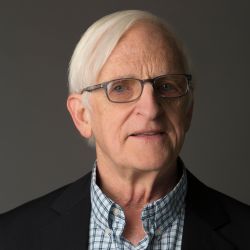
Host: Greg Dalton
Guests:
Roy Scranton, Author, We're Doomed. Now What? (Soho Press, 2018)
Matthew Fox, Co-Author, Order of the Sacred Earth (with Skylar Wilson, Monkfish, 2018)
This program was recorded live at The Commonwealth Club in San Francisco on July 10, 2018.
Can changing our consciousness hold off the climate apocalypse?
When we think about the enormity of climate change and what it’s doing to our planet, it’s easy to get overwhelmed, even shut down, by despair. But maybe that’s not such a bad place to be, argues author Roy Cranston.
“I think going into the hard dark difficult thing, and staying there, is the only way that we’re gonna come up with some new way, some better way to deal with the realities of the situation,” says Cranston. “So I'm all for despair.”
Cranston understands those dark places. As a soldier in Iraq, he taught himself to meditate as a way of dealing with the daily horror of war.
“I started imagining my own death…not just imagining it, but accepting it as true,” he recalls. “That I was gonna go out that day and I was gonna get blown up or I was gonna get shot…And then I would tell myself okay that's done, now what? Now what do I do?”
‘What do I do?’ is the key question when it comes to confronting the climate challenge. Matthew Fox agrees, arguing that despair is “a luxury we can’t afford today.”
Rather than letting our fears overwhelm us, Fox urges us to use them in action. The theologian, priest and author sees a silver lining in the apocalyptic darkness.
“The word apocalypse also means revelation,” Fox reminds us. “So we’re in an apocalyptic time. But we’ve also got to realize the breakthrough is there too.”
Fox concurs with Cranston on the power of meditation, and challenges us to view even the darkest moments as lessons that can lead us to a deeper place.
“Is this a terrible place to be, or is it a really an interesting place to be?” he asks. “What an honor it is -- to be alive at this moment in history, with this opportunity to shake our species up and to save the planet insofar as it’s possible!”
Related Links:
We’re Doomed. Now What? Essays on War and Climate Change
Order of the Sacred Earth: An Intergenerational Vision of Love and Action2018-10-07 Christiana Figueres: A Conversation on Mindfulness and Climate
From Climate One | Part of the Climate One series | 58:56
Former UN climate negotiator Christiana Figueres credits Buddhist teachings both for helping her through a personal crisis, and for providing a source of inner strength that sustained her through negotiations at the 2015 Paris Climate Accord, and helped contribute to its success. “I realized my commitment and my task here is to change that global mood,” Figueres remembers. “And of course I can't change the global mood before I change myself, because as we know all change starts with self.” Can mindfulness practice help us cope with the realities of climate change?
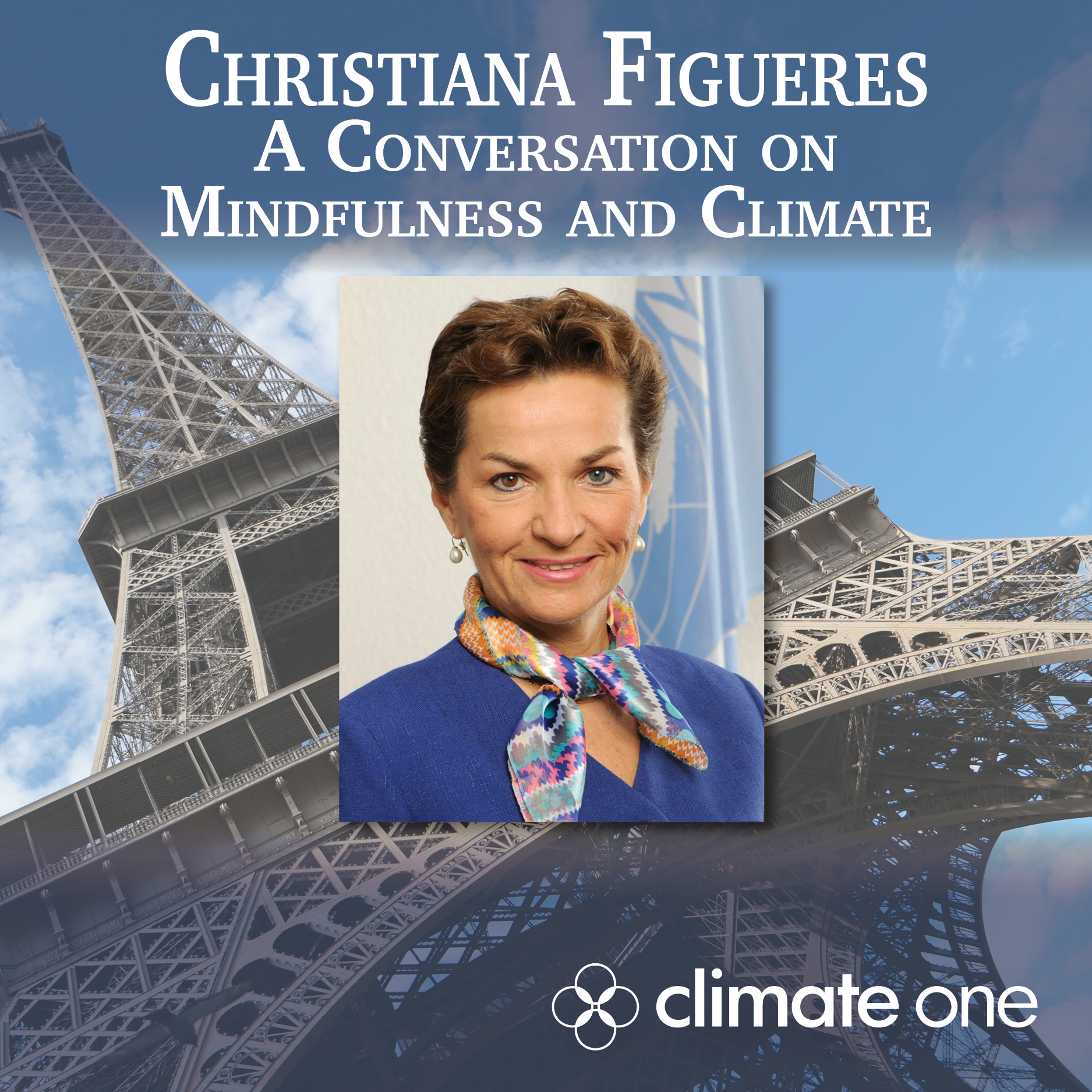
Host: Greg Dalton
Guests:
Christiana Figueres, Former Executive Secretary, United Nations Framework Convention on Climate Change
Joshua Freedman, CEO, Six Seconds; Author, Inside Change
Meg Levie, Senior Teacher, Search Inside Yourself Leadership Institute
After a three-year term as Executive Secretary to the United Nations Framework on Climate Change, Christiana Figueres was exhausted, emotionally drained and ready to pack it in. What kept her going?
“Out of nowhere, I have no idea where, the word ‘Buddhism’ came into my mind,” Figueres remembers. She called a friend to help her on her search. “So I’m like, Buddhism! He says, ‘What do you know about Buddhism?’ I said, nothing. I don’t even know how it’s spelled, but I need it!”
With the help of Buddhist teachings, Figueres found the strength and determination to sign up for a second term, which led her to the 2015 Paris Climate Summit. “I realized my commitment and my task here is to change that global mood,” she says. “And of course I can't change the global mood before I change myself, because as we know all change starts with self.”
The prospect of trying to turn the tide of global warming can seem overwhelming. But Joshua Freedman, author of several books on emotional intelligence, believes that staying mindful can help us cope.
“I think what it means is, just as the seas are rising literally, the emotional seas are rising,” he explains. “And that means we have to work harder, right? And that's what mindfulness practice is all about.”
Rather than letting our emotions make us feel helpless, Freedman continues, we can harness them as a hidden source of power.
“This ability to grow compassion is one of the most powerful things we can do as human beings,” says Freedman. “It transforms us, it transforms our relationships, and ultimately it does transform the world.”
This program was recorded live at The Commonwealth Club in San Francisco on September 16, 2018, and is generously underwritten by the Susie Tompkins Buell Foundation.
Related Links:
Mission 2020: Urgent Climate Action
2019-09-13 From Wheels to Wings: Our Flying Car Future
From Climate One | Part of the Climate One series | 58:56
Can we beat the traffic by taking to the skies? Sailing over freeways in a flying car, getting to work in minutes instead of hours, has long been the stuff of science fiction. But ambitious startups are on their way to making three-dimensional commutes a reality. For now, there are still many challenges to getting those flying cars off the ground, from mechanics and design to infrastructure, regulatory issues, air traffic and zoning. What does our flying car future look like?
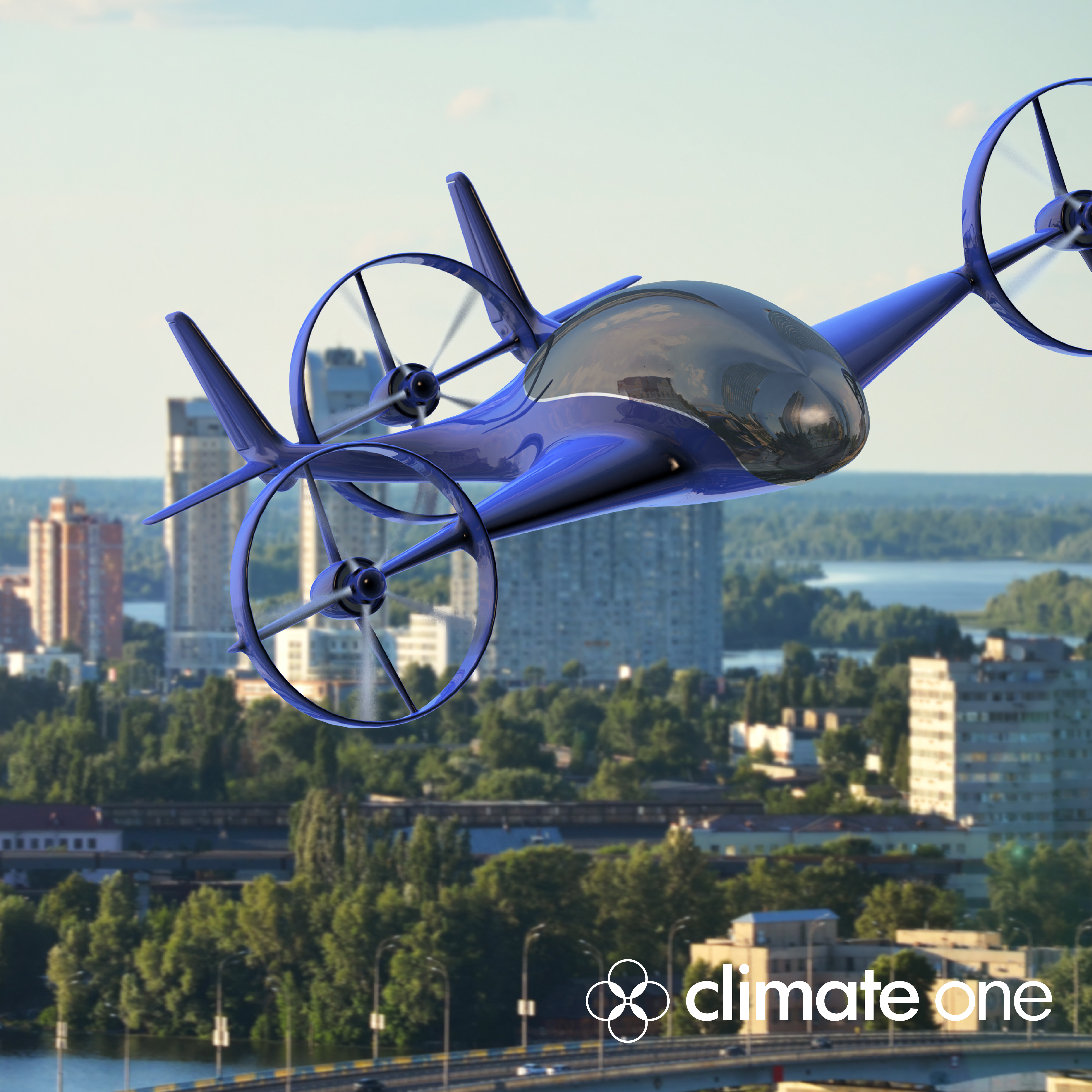
Host: Greg Dalton
Guests:
JoeBen Bevirt, Founder and CEO, Joby Aviation
Uma Subramanian, CEO, Aero Technologies
Jennifer Richter, Partner, Akin Gump
CharlieVogelheim, Principal, Vogelheim Ventures
This program was recorded in front of a live audience at The Commonwealth Club of California in San Francisco on August 20th, 2019, and was made possible by the ClimateWorks Foundation.
Can we beat the traffic by taking to the skies?
For more than a century, the automobile has ruled our city streets, chaining us to grid-shaped streets choked with lines of traffic. And for many of us, seemingly endless hours of daily commuting.
“But what if we can remove those chains?” asks JoeBen Bevirt of Joby Aviation. “What do our lives, what do our cities, how does the world look 20 years from now or 50 years from now? That's what gets me up everyday.
“So my mission is to save a billion people an hour a day in their daily commutes.”
The ability to sail above the freeways in a flying car, getting to work in minutes instead of hours, has long been the stuff of science fiction. But JoeBen Bevirt is already on his way towards making it a reality. He’s raised more than $100 million to develop a five-seater that he claims will be faster, cheaper and quieter than helicopters. And not just as a plaything for the rich, Bevirt promises.
“We really want to be able to launch this at an affordable price point that’s accessible to everyone,” he says. “That is similar cost to taking a taxi on a cost per passenger mile. And then our ambition is to get it to the cost of personal car.”
Other startups around the world are also developing drones or flying cars. Urban air mobility – or UAM -- is coming.
For now, there are still many challenges to getting those flying cars off the ground, from infrastructure to regulatory issues, from air traffic to zoning. Not to mention mechanics and design – what will the flying car of the future look like? Auto industry consultant Charlie Vogelheim says what comes to mind for most consumers is a cross between the Jetson’s family-sized space capsule and Chitty Chitty Bang Bang.
“The thing that people keep thinking about when they think about flying cars is, ‘where is that car that I can drive and then the wings come out?’”
Related Links:
Air-Taxi Startup has a Working Prototype (Bloomberg)
How Airbus is working to take urban mobility airborne (Pitchbook)
2019-10-18 Law and Disorder: Climate Change in the Courts
From Climate One | Part of the Climate One series | 58:56
The jury is out on whether our legal system is equipped to deal with climate change. While some parts of the country are inundated by floods, others are resisting the growth of oil and gas infrastructure — and both are running into the law.
Do youth have a constitutional right to a clean environment? At what point should disaster preparedness become disaster law? Does water have legal rights? A discussion on how many facets of the climate challenge are pushing, and changing, the law.
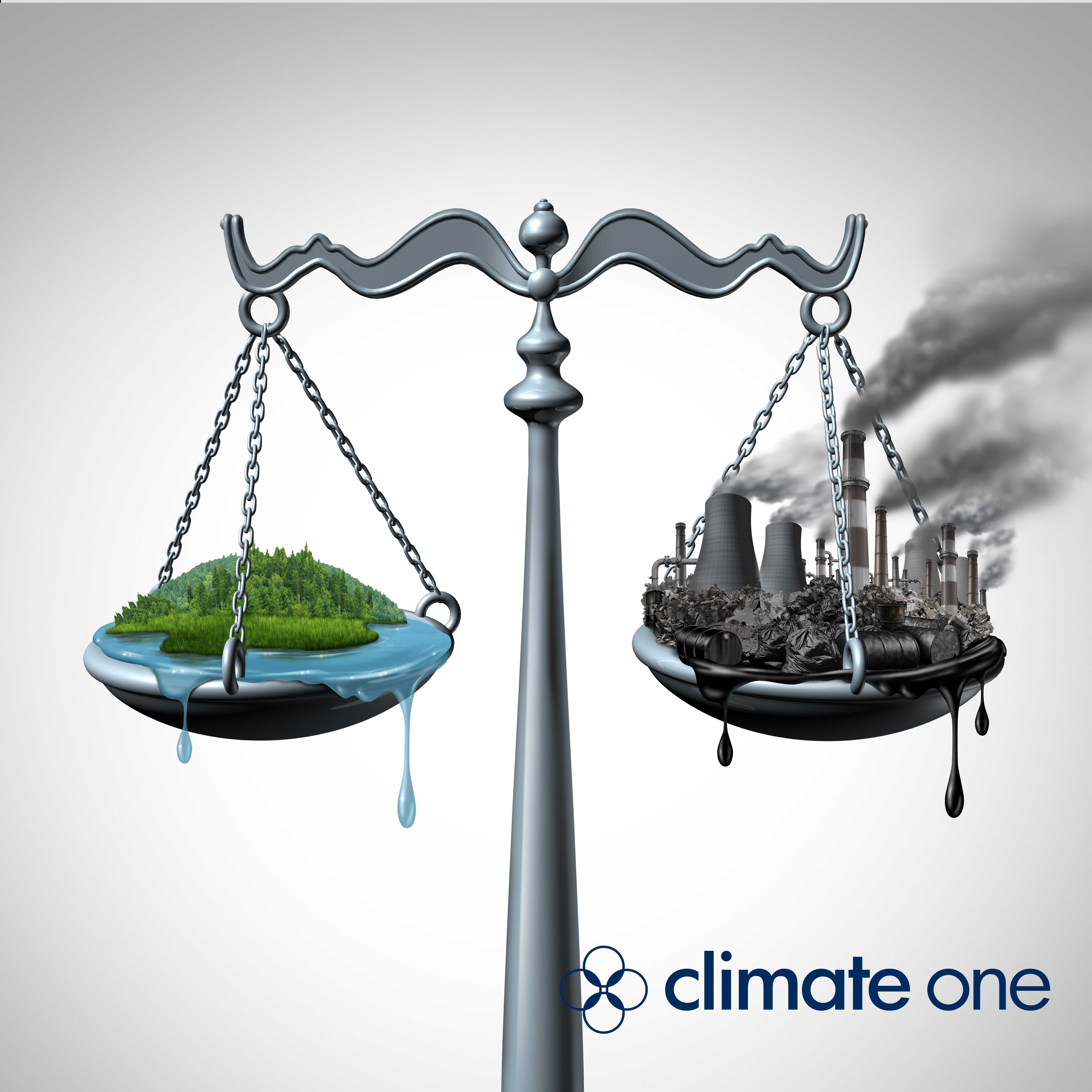
Host: Greg Dalton
Guests:
Michael Gerrard, Andrew Sabin Professor of Professional Practice, Columbia Law School
Laura Tuggle, Executive Director, Southeast Louisiana Legal Services
Tanisia Reed Coachman, Houston resident and survivor of the Tax Day Flood
Nicholas Kusnetz, Reporter, InsideClimate News
Portions of this program were recorded at the Commonwealth Club of California in San Francisco.
Climate change is affecting every aspect of our lives - our environment, our health, our economy and our future. And now, it’s even creeping into our courtrooms. Climate change has brought on a wave of new reasons to go to court, for those on both sides of the issue.
In Julian vs. the United States, youths sued the government for violating their constitutional right to life and liberty by encouraging climate-altering activities. Fossil fuel companies are fighting back by advancing new laws that have a chilling effect on the activist movement – such as an Oklahom law that equates protests with domestic terrorism.
“Basically what the bill did is it took actions that are somewhat common in environmental activism movement… sort of blocking a gate or, in the case of Standing Rock, a protest [that] bleeds onto private land,” explains reporter Nicholas Kusnetz. “It took something where there were previously kind of misdemeanor minor charges, and suddenly they became really serious charges.”
The increase in weather-driven disasters over the past few years has given rise to a whole new branch of legalese, known as “Disaster Law.” Laura Tuggle of Southeast Louisiana Legal Services helps disaster survivors navigate the muddy waters of federal relief, insurance claims and inheritance rights. She recommends that people not wait for a disaster to get their affairs and paperwork in order.
“Even if everybody knew that grandma wanted her niece or her granddaughter to inherit her home, if that's not written down in a will that's not what's going to happen by operation of law,” Tuggle warns.
RELATED LINKS:
Our Children’s Trust: Juliana v. United States
Sabin Center for Climate Change Law at Columbia University
Toledo, Ohio grants Lake Erie the same rights as people (Smithsonian)
A Look Back at the Tax Day Flood of 2015 (Houston Chronicle)
Harsh New Anti-Protest Laws Restrict Freedom of Speech (Nicholas Kusnetz, Washington Post)
2021-01-01 Erin Brockovich/Inconspicuous Consumption
From Climate One | Part of the Climate One series | 58:59
Twenty years ago, Julia Roberts won an Oscar for her portrayal of maverick environmental activist Erin Brockovich in the film of the same name. These days, in addition to her work on water safety and toxins in communities, Brockovich has taken on the climate emergency. In her mind, the connection is fundamental. “Climate change is about too much water, not enough water, no water, drought, flooding,” Brockovich says, adding, “It’s becoming real because it's tangible, it's touchable. You're running from it, you’re breathing it. You're swimming in it. You could be drowning in it. I just think it's here.”
Also, New York Times reporter Tatiana Schlossberg on how everyday choices – like deciding what to eat, wear or binge-watch – may impact the planet more than you think. And two experts on sustainable apparel uncover the hidden carbon footprint stuffed in our drawers, closets and gym bags.

Host: Greg Dalton
Guests:
Erin Brockovich, Author, Superman's Not Coming: Our National Water Crisis and What We the People Can Do About It (Pantheon, 2020)
Tatiana Schlossberg, Author, Inconspicuous Consumption: The Environmental Impact You Don't Know You Have (Grand Central Publishing, 2019)
Rebecca Burgess, Founder and Director, Fibershed
Amina Razvi, Executive Director, Sustainable Apparel Coalition
“Erin Brockovich: Superman’s Not Coming” was first broadcast on September 25, 2020.
“Inconspicuous Consumption” was first broadcast on January 6, 2020.
On today’s program, we revisit three Climate One conversations from the past year that empower us to make a difference – both individually and collectively.
Twenty years ago, Julia Roberts won an Oscar for her portrayal of maverick environmental activist Erin Brockovich in the biopic of the same name. The film depicted Brockovich’s successful crusade against corporate behemoth Pacific Gas & Electric, which had been pumping contaminated wastewater into the water supply of the town of Hinckley, California.
The real Erin Brockovich hasn’t slowed down since then - in fact, she’s out there writing the sequel, taking on corporate polluters and government enablers from upstate New York to Flint, Michigan to Beverly Hills, California. Much of her work centers on empowering underserved and overlooked communities to collectively advocate for themselves. And that can start with just one person. These days, in addition to her work on water safety and toxins in communities, Brockovich has taken on the climate emergency. The connection, she says, is fundamental.
“Climate change is about too much water, not enough water, no water, drought, flooding,” she says. “I think it's becoming real because it's tangible, it's touchable. You're running from it, you’re breathing it. You're swimming in it. You could be drowning in it. I just think it's here.”
“Climate change will be about our response, our preparedness, our defending ourselves,” Brockovich continues. “And not just thinking that because you can’t see it, it’s not going to happen.”
Everyday choices – like what to eat, wear or binge-watch – may impact the planet more than you think. But how far can individual choices take us?
Tatiana Schlossberg is the author of Inconspicuous Consumption: The Environmental Impact You Don't Know You Have, in which she argues that everyday consumer choices may not change the carbon economy, but they’re an important part of being the kind of person who acts in more collective and impactful ways.
“I don't think we should feel individually guilty necessarily for our consumption,” Schlossberg says, “but we should feel collectively responsible for fixing the systems and building a better world.”
Among the choices we make where our carbon footprint may be hidden in plain sight is in what we wear. Rebecca Burgess, Founder and Director of Fibershed, a nonprofit that helps develop regional and regenerative fiber systems for clothing producers, believes that our clothing choices can be as significant as our food choices.
“If I eat local, can I wear local? If I eat organic, am I wearing organic?” she asks. “If I’m interested in climate smart agriculture, how am I wearing those values and the fibers that I'm wearing each day?”
Burgess believes we need to re-think our relationship to our wardrobes. “Think about the timelessness of the piece,” she advocates, “think about wearing a garment or purchasing a garment that's gonna be with you for the long haul. Love it. Really be a custodian not a consumer.”
Related Links:
Erin Brockovich – Community Healthbook
Superman’s Not Coming: Our National Water Crisis and What We the People Can Do About It (Pantheon, 2020)Hinkley groundwater contamination
Flint Water Crisis (NRDC)
Understanding the Safe Drinking Water Act (EPA)
Inconspicuous Consumption: The Environmental Impact You Don't Know You Have
Fibershed
Sustainable Apparel Coalition